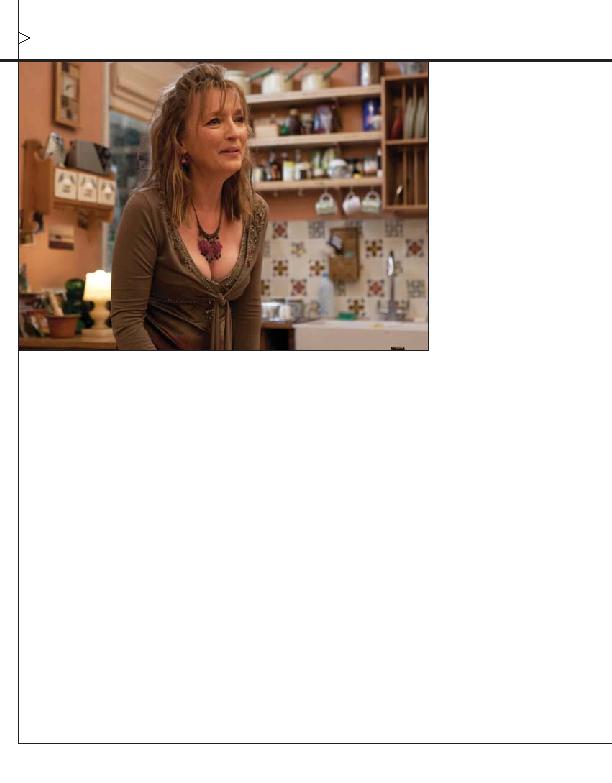
script, which she can then read before decid-
ing whether to commit. With Mike Leigh, the
star gets a phone call invitation to become
part of a creative adventure that begins with
only the vaguest notion of where the result
might take everyone. "For me, the journey of
making the film is the journey of discovering
what the film actually is," Leigh says. "In the
end, the real discovery as to what the film is
happens as a result of shooting it."
like the secret formula for Coca-Cola. Things
are no different when he discusses Another Year,
though the writer-director does reveal enough
for one to get a basic idea of how his mysteri-
ous methods work. One thing Leigh knew
going in was that he wanted the project to
spotlight Lesley Manville, an actress who had
appeared in eight of his previous works, both
on stage and screen, over the last two decades.
ties, for his next project, the 67-year-old film-
age and to make a more contemplative work.
"I had a very strong sense that Lesley would
be able to create something that sat with the
general feeling I had of exploring [the ideas of]
life passing, looking back to the past and look-
ing forward to our old age and all those
things," he says.
group of aging Londoners, Leigh actually jug-
gles an ambitious mix of themes and ideas in
his film, so much so that it's nearly impossible
to reduce the project to a neat summary. "I
don't force myself to contort whatever is in my
head into a digestible pitch or to talk the sim-
plistic, infantile idea of a plot premise or what-
ever," he says with a playful surliness. And
while there was no specific kernel at the out-
set, over time, the decision to focus on a year --
rather than a week or a few days, which is his
preferred timeframe -- resulted from the colli-
sion of three separate considerations.
ring to the scatterbrained divorcée Manville
ping in on her married friends Tom
and Gerri (played by Leigh regulars Jim
Broadbent and Ruth Sheen). "I don't
think they could tolerate frequent vis-
itations, certainly not in the short
space of a week or a month, so it
would have to be a longer timespan."
pect of Tom and Gerri's personality.
Though Leigh wanted to show the
characters gardening together at their
allotment, he says, "If we were there
once, it would be boring," which again
indicated to him that he would need
more time.
to determine the look of the film, he
returned with four different options.
After looking at it, Leigh remembers, "I
suddenly had this clairvoyant flash. I
thought, `I know what this is: It's four
seasons.' When the lights came up, he
said, `Well, which way are we going to
go?' and I said, `All ways! We're going
to have four seasons,' and that sort of
opened up the whole film."
way, which is about the cyclical nature of life
and the inevitability of it all. And also, from a
structural point of view, it became very excit-
ing that with each of the seasons, you could
start from another angle. It could be told in a
way as four separate stories."
never more true than on a Mike Leigh movie,
where the actors have a hand in creating their
characters. Leigh always begins with a vague
idea of the fictional relationships between his
performers: fathers and sons, husbands and
wives and so on. Once he's selected his en-
semble, Leigh gives himself several months
(five, in the case of Another Year) to work out
the particulars with his cast that will become
the film, which is then shot quite economi-
cally in a matter of weeks (just 12 in this case).
outside world, instructing them to borrow de-
tails from their relatives and acquaintances.
"This is not the kind of work where you sit in
a hermetically sealed environment dis-